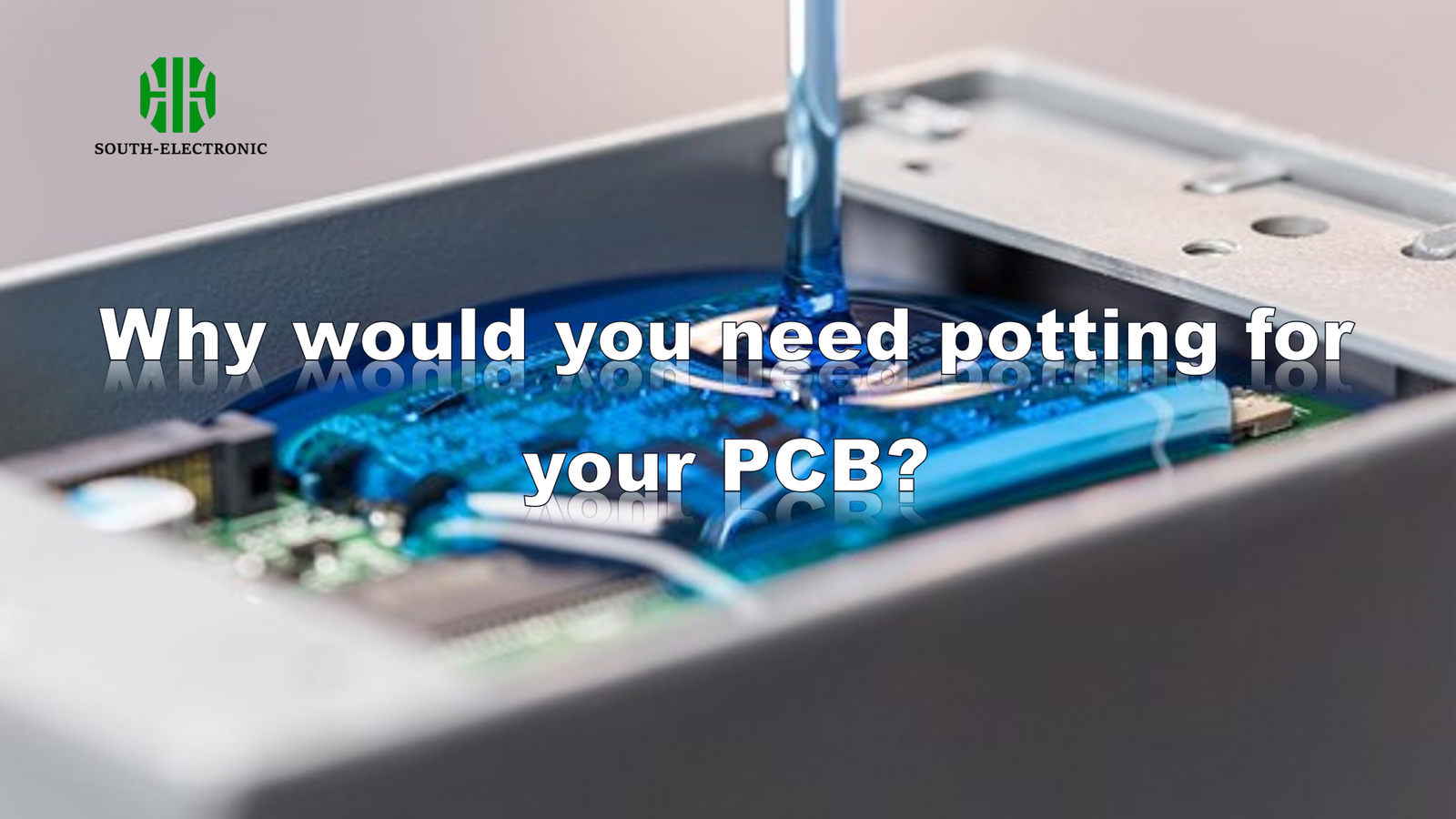Your PCB faces threats daily. Moisture or vibration can kill it. Potting[^1] shields your circuit board. Protection means less failure risk.
Potting[^1] encapsulates your PCB in resin. It blocks moisture, dust, and shocks. This prevents short circuits and damage. Your board lasts longer in harsh conditions.
[^2] potting, [silicone potting](https://www.ipc.org/system/files/technical_resource/E2%26S12_01.pdf)[^3], potting vs conformal coating, PCB moisture protection, industrial PCB potting](https://southelectronicpcb.com/wp-content/uploads/2024/09/image-39-1024x576.png)
Let's explore key decisions for protecting your PCB. These choices impact performance and cost.
Potting[^1] or conformal coating[^4]: how to choose the right PCB protection?
You want protection without overpaying. Picking wrong risks board failure. I'll show which suits your needs.
Potting[^1] covers the entire PCB thickly. Coatings apply a thin surface layer. Use potting for rugged environments. Coatings work for indoor electronics.
[^1] Instead of Conformal Coating?](https://southelectronicpcb.com/wp-content/uploads/2024/09/image-41-1024x712.png)
Match protection to your conditions
First, check where the board lives.
Is it underwater or vibrating constantly?
Is it inside a dry office?
Consider material differences:
| Feature | Potting[^1] | Conformal Coating |
|---|---|---|
| Thickness | 1-5mm | 0.05-0.5mm |
| Impact Strength | High | Medium |
| Cost Per Unit | Higher | Lower |
| Repair Ease | Difficult | Easier |
Heavy potting defends against physical stress. A motorcycle controller needs this. Conformal coating handles light moisture. Choose it for home gadgets. Full coverage blocks chemical leaks better in factories. Coating lacks this defense. Always weigh durability against cost.
Which type of potting compound is best for your project?
Compounds aren't equal in strength. Bad choices lead to cracked shells. Understand resin types for your project.
Select epoxy[^2], silicone, or polyurethane[^5]. Epoxy handles high heat. Silicone stays flexible when cold. Polyurethane resists chemicals well.
[^1] in Electronics?](https://southelectronicpcb.com/wp-content/uploads/2024/09/image-40-1024x711.png)
Environment determines compound choice
Where will your PCB operate daily?
What temperatures will it endure?
Compound performance table:
| Type | Temperature Range | Flexibility | Chemical Resistance |
|---|---|---|---|
| Epoxy | -40°C to +150°C | Rigid | Excellent |
| Silicone | -55°C to +200°C | High | Good |
| Polyurethane | -40°C to +125°C | Medium | Excellent |
Epoxy suits engine control units. It withstands heat but cracks if bent. Silicone is perfect for outdoor devices. Its flexibility prevents frost damage. Polyurethane guards against oil in industrial machines. Think about electrical needs too. Silicone insulates best in damp conditions. Mixing the wrong resin wastes money.
How to optimize your budget for PCB potting, considering hidden costs?
Potting[^1] costs hide unexpected traps. Material waste can drain funds. I'll reveal money-saving tactics.
Look beyond compound price. Factor in labor, tools, and failed batches. Measure precisely to cut waste.
[^1] Compounds](https://southelectronicpcb.com/wp-content/uploads/2024/09/image-42-1024x711.png)
Break costs to find savings
What are your production volumes?
Will you need special equipment?
Hidden cost comparison:
| Cost Factor | Low-Budget Approach | High-Budget Pitfall |
|---|---|---|
| Material | Calculate exact needs | Overbuying inventory |
| Labor | Simple hand pouring | Automated machines |
| Testing | Prototype first | Full production test |
| Rework | Preventive checks | Scrapping boards |
Hand pouring saves money for small batches. Automation costs more but speeds big jobs. Testing prototypes avoids mass failures. One project taught me this hard lesson. Poor checks wasted twenty boards. Compare curing times too. Faster compounds lower labor hours. Thinner layers reduce material costs.
Conclusion
Potting[^1] shields PCBs from hazards. Choose materials wisely. Balance protection and costs. Your boards will last longer.
[^1]: Explore the advantages of potting for PCB protection and how it enhances durability.
[^2]: Discover why epoxy is a popular choice for PCB potting and its thermal resistance properties.
[^3]: Find out how silicone potting can protect your PCB in extreme temperatures and conditions.
[^4]: Learn about conformal coating and its applications in electronics for better decision-making.
[^5]: Understand the chemical resistance of polyurethane and its suitability for industrial applications.



